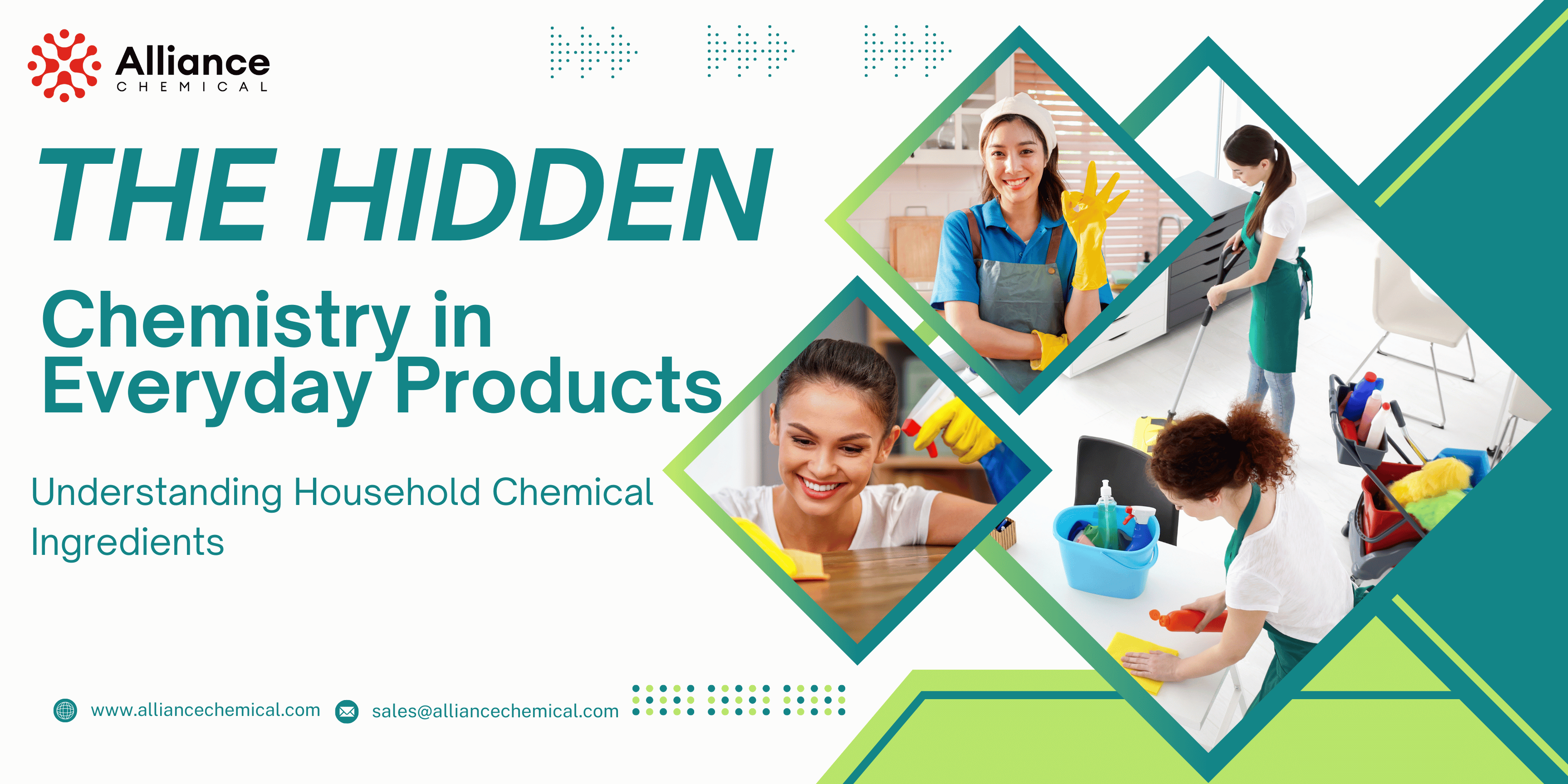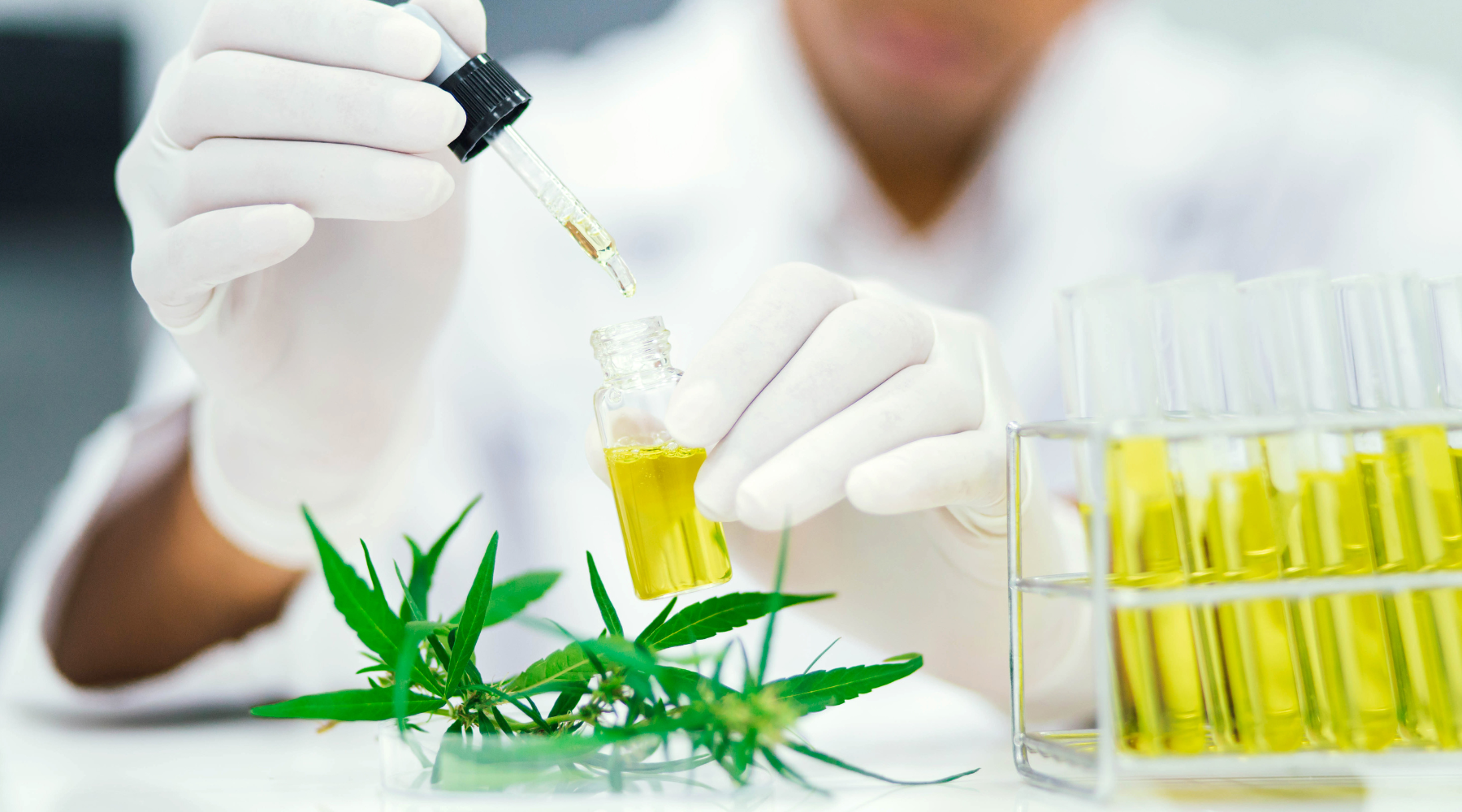
The Hidden Chemistry in Everyday Products: Understanding Household Chemical Ingredients
Table of Contents
Summary
📋 What You'll Learn
This guide will walk you through the hidden chemistry in everyday products: understanding household chemical ingredients with detailed instructions.
Table of Contents
- Introduction: Why Everyday Chemistry Matters
- Kitchen Connections: Acids, Bases & Food Safety
- Bathroom Brilliance: Cleaning & Personal Care
- Laundry Lab: Surfactants & Stain Science
- Garage & Garden: Industrial-Strength Solutions
- Deep Dive: Acetic Acid & Vinegars
- Household Heroes: Safety & Handling
- Reading Labels: Technical vs. Food Grade
- Focus on Key Alliance Chemical Products
- Green Alternatives & Eco-Conscious Chemistry
- Fun Facts & Quirky Tales
- Conclusion & Final Thoughts
1. Introduction: Why Everyday Chemistry Matters
Wake up, brew coffee, make breakfast, clean a spill—before lunchtime, you’ve already orchestrated a half-dozen chemical reactions. It’s easy to forget that even the simplest tasks—like using vinegar to descale a kettle—are driven by science. At Alliance Chemical, we believe understanding these everyday processes helps you work smarter and stay safer.
"Nothing in life is to be feared, it is only to be understood."
This guide reveals the hidden chemistry that shapes your daily routines—from the kitchen and bathroom to your garage and garden. We’ll spotlight the differences between technical-grade and food-grade chemicals, ensuring you know exactly when (and how) to use powerful products like high-concentration vinegars or solvents.
2. Kitchen Connections: Acids, Bases & Food Safety
The kitchen is essentially a miniature chemistry lab where acids, bases, and enzymes collaborate to make your meals (and cleaning efforts) possible.
2.1 Baking Soda & Acidic Reactions
Baking soda—aka sodium bicarbonate—reacts with acids like lemon juice or vinegar to form carbon dioxide (CO2) bubbles. That’s how pancakes get fluffy instead of pancake-flat. This is a classic acid-base reaction, served up on your breakfast plate.
2.2 Food-Grade vs. Non-Food Grade Vinegar
Vinegar is diluted acetic acid. Standard table vinegar is around 5% acidity—perfect for cooking and pickling. But industrial vinegars can be much stronger: 10%, 30%, 50%, or even 75%. These are excellent for cleaning and weed control but unsafe for consumption.
For cooking or food prep, only use vinegars labeled “food grade”. Something like Acetic Acid Glacial (Food Grade) is carefully purified for safe use in regulated food processes—under strict dilution guidelines. Meanwhile, technical-grade solutions are a no-go in the kitchen.
3. Bathroom Brilliance: Cleaning & Personal Care
The bathroom is a chemical epicenter—where surfactants in your shampoo meet oxidizing agents in your toilet cleaner.
3.1 Surfactants in Soaps & Shampoos
Surfactants lower water’s surface tension, helping emulsify oils and lift dirt from surfaces (and hair). Common ones—like sodium lauryl sulfate (SLS)—produce that pleasant lather. They can cause dryness for some, but their cleaning power is hard to beat.
3.2 Bleaches & Disinfectants
Sodium hypochlorite (bleach) is a tried-and-true disinfectant. Products range from household ~5.25% to 12.5% for heavy-duty needs. Hydrogen peroxide, from ~3% to 30%, offers a chlorine-free alternative. Both break down stains and kill microbes effectively—just remember to never mix bleach with ammonia (see below).
4. Laundry Lab: Surfactants & Stain Science
Even if you’re using fancy laundry pods, the chemistry basics remain: surfactants break up soils, enzymes target proteins and starches, and bleaches whiten fabrics.
4.1 Enzymatic Detergents
Enzymes in detergents, like protease or amylase, zero in on specific stain types. No more mystery stains on your favorite T-shirt—just a targeted approach that lifts the offending molecules right out of the fabric.
4.2 Oxygen Bleaches
Oxygen-based bleaches (often containing hydrogen peroxide compounds) brighten and deodorize. They’re gentler on colors compared to chlorine bleach and can still conquer tough stains.
5. Garage & Garden: Industrial-Strength Solutions
Your garage or garden shed is where heavy-duty chemicals often live. From paint thinners to weed killers, these are potent solutions that demand respect.
5.1 Paint Thinners & Solvents
Mineral spirits, acetone, or toluene—each solvent has unique properties and evaporation rates. For paint stripping or heavy grease removal, choosing the right solvent can save you hours of frustration.
5.2 Weed Control with High-Concentration Vinegar
If you’re battling driveway weeds, high-acid vinegars like 30% or 50% acetic acid can act as a non-selective herbicide. Just remember non-selective means it won’t spare your beloved roses if they’re in the splash zone. And never use these products in cooking—they’re purely industrial strength.
Hazard Alert!
Never mix bleach with ammonia-based cleaners. The reaction releases chloramine gas, a highly toxic vapor that can irritate or seriously harm the lungs. If you’re aiming for comedic chaos, stick to slapstick movies—your health is no joke!
6. Deep Dive: Acetic Acid & Vinegars
Acetic acid is the defining component of vinegars. Concentration and purity define how—and where—you can use it.
6.1 Glacial Acetic Acid: Food Grade vs. Technical
Glacial acetic acid is ~99% acetic acid. It can freeze at around 16.7°C (62°F), hence “glacial.” At such purity, it’s highly corrosive and can cause severe burns if misused.
Food-grade glacial acetic acid undergoes extra purification for regulated food processing. It must be diluted properly to safe levels. Conversely, technical-grade acetic acid may contain trace impurities—fine for industrial uses, not for ingestion.
6.2 Industrial Vinegars
From 10% to 75%, industrial vinegars excel at removing mineral deposits, dissolving grime, and toppling tough weeds. These are not edible. If you’re unsure, always check labels or contact Alliance Chemical directly.
7. Household Heroes: Safety & Handling
Even the most “ordinary” chemicals can pose hazards if neglected. Keep these guidelines in mind:
- Ventilation: Strong fumes demand fresh air.
- Protective Gear: Gloves, goggles, aprons—especially with high-acid vinegars or caustic bases.
- Label Reading: Ensure “food grade” means just that. Check Safety Data Sheets (SDS) for new or unfamiliar products.
- No Unplanned Mixing: Bleach + ammonia = chloramine gas. Resist the urge to play “mad scientist.”
- Storage Sense: Keep acids and bases separate. That cartoon explosion scenario can happen if you’re careless.
8. Reading Labels: Technical vs. Food Grade
Technical grade products, such as some solvents, industrial vinegars, or acetic acid, suit manufacturing and cleaning. Food-grade or USP-grade chemicals meet stricter standards to ensure safe contact with food. Always match the product’s grade to your intended use.
- Technical Grade: May have impurities—sufficient for cleaning or industrial tasks but not edible.
- ACS Grade: Complies with American Chemical Society standards, often for lab research.
- USP or Food Grade: Strict purity for contact with food, beverages, or pharmaceuticals.
When uncertain, ask an expert or review the SDS. Better safe than sorry.
9. Focus on Key Alliance Chemical Products
Alliance Chemical offers a broad lineup. Here are a few standouts tailored for different users.
9.1 Acetic Acid Product Family
- Acetic Acid Glacial (Food Grade) – A must for certain food processing needs. Requires meticulous dilution.
- Acetic Acid Glacial (Technical Grade) – Perfect for industrial cleaning, manufacturing, or pH adjustments. Not for consumption.
- 10%, 30%, 50%, 75% Vinegar – Tackle cleaning, descaling, and weed control with ease.
9.2 Bases & Caustics
Sodium Hydroxide (NaOH) and Potassium Hydroxide (KOH) are staples in soap-making, drain cleaning, and pH balancing. Highly corrosive—treat with respect.
9.3 Solvents & Cleaning Aids
Need acetone, methanol, or isopropyl alcohol? Our solvents collection covers everything from paint thinner to specialized electronic cleaning solutions. Check out d-limonene for a citrus-based degreaser that smells as good as it cleans.
9.4 Specialty & Green Solutions
For more eco-friendly or specialized needs—like USP-grade d-limonene, hydrogen peroxide solutions, or advanced glycols—explore our Specialty Chemicals section.
10. Green Alternatives & Eco-Conscious Chemistry
“Green” isn’t just marketing jargon—it’s a real movement toward safer, more sustainable chemical solutions. Examples include:
- D-Limonene: A biodegradable solvent from citrus rinds.
- Hydrogen Peroxide: Breaks down into oxygen and water, leaving no chlorine byproducts.
- Concentrated Vinegars: A weed-control option without synthetic herbicides, albeit non-selective.
Natural doesn’t always mean risk-free. Follow instructions and handle responsibly—even if it smells like oranges!
11. Fun Facts & Quirky Tales
11.1 Fun Facts
- Bananas are radioactive: They contain potassium-40. It’s harmless but a neat trivia nugget!
- Vinegar dissolves eggshells: Even ~5% table vinegar can eat away an eggshell, illustrating acid-base reactions.
- Soap was once a luxury: In some ancient societies, soap was so prized it could be used for trade.
11.2 Quirky Tales
Ever hear about the well-meaning homeowner who mixed bleach with ammonia to create a “super cleaner”? The toxic gas cloud that ensued taught them an unforgettable lesson—and an unwelcome ER visit. Don’t experiment like a mad scientist in your home!
"Science is a way of thinking much more than it is a body of knowledge."
12. Conclusion & Final Thoughts
From the moment you rise to the final dish you wash at night, chemistry underpins your daily routine. Grasping the nuances—like food-grade vs. technical-grade vinegars—transforms you into a savvy consumer and ensures safety for everyone in your household.
Alliance Chemical supports this journey with high-quality products, from acetic acid solutions and bases to solvents and green alternatives. We’re here to help—whether you’re a DIY hobbyist, a professional, or simply curious about everyday science.
For questions about grades, usage, or safety—never hesitate to reach out. With the right knowledge, you can harness the power of chemical reactions to make your tasks easier, more efficient, and always safe.
God bless you, and may all your chemical adventures be enlightening!









